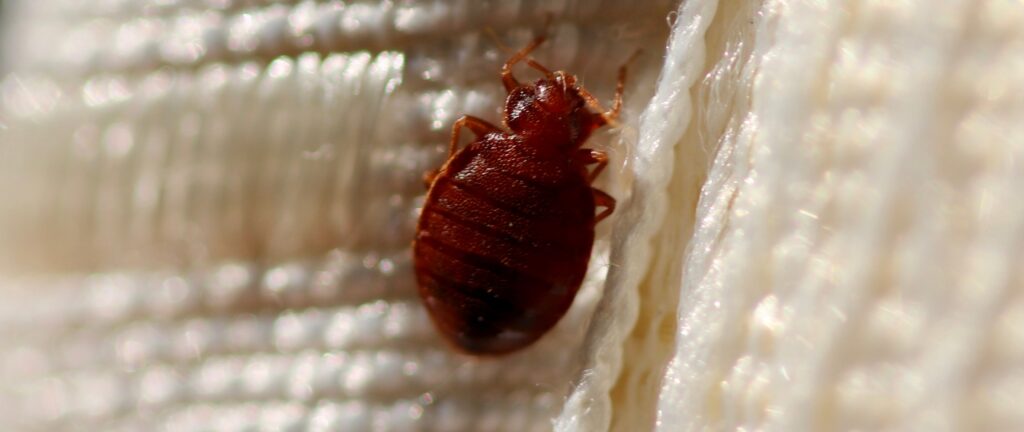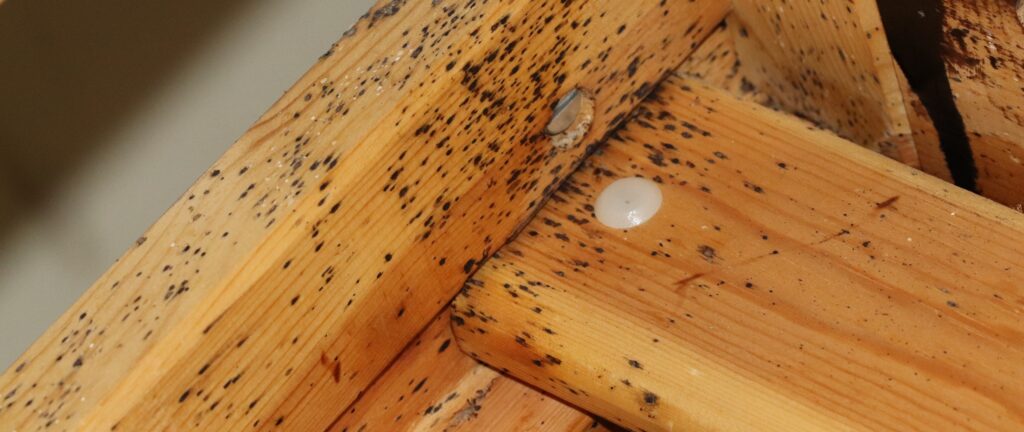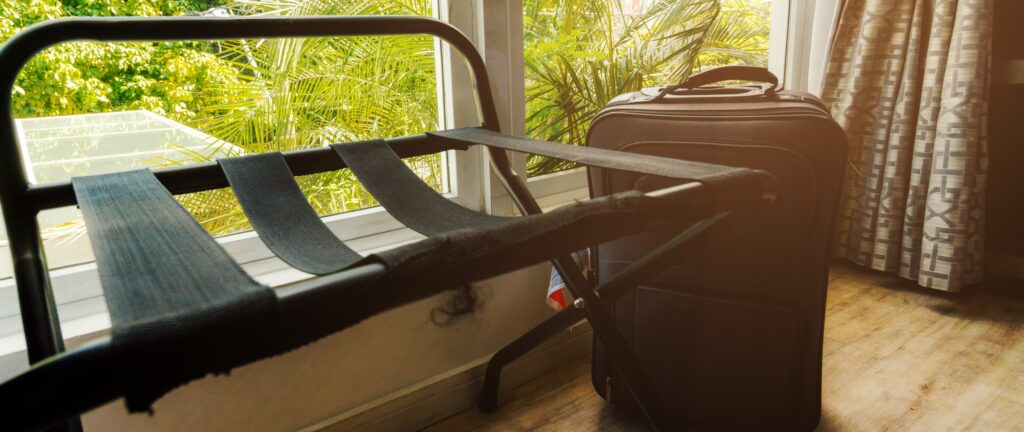Natural Defense: Can Wool Bedding Act as a Barrier Against Bed Bugs?
With travel season in full gear, bed bugs are in the news again. Their favorite hangouts are typically Chicago, New York, and Philadelphia, but recently it was reported that seven Las Vegas strip hotels have had bed bug outbreaks in the last year and a half.
As high as their ick factor is, bed bugs are part of travel reality. Having bed bugs doesn’t mean anything bad about a place or a person, they are just little opportunists who have figured out that sleeping humans are great targets. (We mentioned them in our article on travel bedding, find that here.) And with a little bit of education, you can increase your odds of preventing them from coming home with you and causing trouble.
After a couple decades of selling wool mattresses and wool bedding, we’re fairly confident in wool’s bug repellent qualities. Because of wool’s ability to manage moisture and allow for breathable air flow, wool bedding just doesn’t allow for the ideal environment for buggers like bed bugs and dust mites. We’ve offered some tips before on our Counting Sheep Blog, check out “6 Ways to Prevent Bed Bugs Naturally” and “Wool Myths #7: Wool Attracts Bugs.”
However, it’s still possible to get bed bugs in your bedroom, as one of our team members, Karen, discovered a few years ago. How did her wool mattress and topper fare, and how did she handle it? Let’s find out.

That Sinking Feeling
Huh. The mosquitoes must’ve been bad at that pool party I went to. But why are the bites in a straight line on the backs of my arms? And why are they extra itchy? And what are these dark spots on my sheets? Uh oh…
Yep. That’s how I found myself in the middle of my very first, and hopefully last, bed bug experience. I knew this wasn’t going to be fun. I was pretty confused about where the heck they had come from, as I hadn’t traveled in at least three months and I hadn’t had any visitors either. But it hardly mattered, because I had to deal with it.
I began researching what to do, and…just wow. Here is an instance where Google is not your friend! I found lots of advice telling me to throw everything away—furniture, pillows, mattress—and then fumigate the whole house. I discovered that not all exterminators even manage bed bug infestations, and the ones that would wanted up to $4,000 to do it. And the kicker? They don’t even guarantee results or that they won’t come back after all that toxic treatment.
After panicking for 24 hours, and sleeping on the couch that night (a short term strategy, as they will come and find you), I took some deep breaths. I found a blog post about a woman’s experience, and she counseled not to throw everything away, that it could be salvaged. Phew! I did not want to toss out my gorgeous wool bedding! But after investing in such lovely chemical-free items, I also didn’t want to expose it to toxic chemicals either. I knew there had to be a better way, so I decided to figure it out myself.
My plan of attack was two-fold: using a silica dust called CimeXa and a lemongrass essential oil spray from Ecologic. Both are natural and nontoxic, though you must wear an N95 mask with the silica dust so you don’t inhale it. Be sure to read all directions before using.
Let There Be Light
First things first. I took all the linens off the bed and washed them twice on the hottest water setting. Then two cycles in the dryer on the hottest, longest setting.
Luckily for me, it was summer, and we don’t receive a lot of summer rain around here. So I placed some tarps outside, carried my queen wool mattress and topper outside, and put them out in the full blazing sun. Bed bugs hate the sun, but your wool bedding loves it! Then I dismantled my bed frame and took the pieces outside too.
While out there, I began treating everything. You’re going to look for signs of them, either the bugs themselves (though they are quite good at hiding) or the dark, blood-like spots they leave behind. They love tight crevices, seams, tufts, zippers, and buttons. In my case, they were concentrated around the head of my bed, on my side, and especially in my bed frame. But not my wool mattress!
I dusted the bedframe down, and sprayed the seams and tufts of the mattress with lemongrass oil just in case. Then I left it all out in the sun for a few days while I stayed at a friend’s house. It’s important to break their life cycle—without blood, they can’t continue to lay eggs, so it helps control their numbers.

Treating the Bedroom
Returning to the scene of the crime…I couldn’t find evidence of bed bugs in my wool rug that had been under my bed, but I dusted and vacuumed it anyway and carried it out into the sun. I removed all the electrical outlet plates, then dusted there, the baseboards, the cracks in the wooden floors, and my dresser, letting it sit for a few days.
When I was satisfied that the buggers had likely been evicted, I vacuumed the bed frame and all the dust up from the room. Then I wiped down the bed frame, the floors, and the baseboards with a damp cloth sprayed with more lemongrass oil.
I allowed that to air out for a day, then I began moving everything back in and reassembling my bedroom. Admittedly, it was really nice to have such a clean and fresh bedroom. I would just like it to be for a less buggy reason next time!
So How’d the Wool Perform?
The infamous bed bug incident happened five years ago, and I still have all my Shepherd’s Dream bedding today. It’s clear to me that this just wouldn’t be possible with conventional mattresses or synthetic bedding.
Bed bugs are flat and can get themselves into the tightest of spaces. They use the seams and thread holes to infest mattresses, box springs, and pillows, burrowing in where they can’t be killed by surface treatments. Because the wool acted as a deterrent, the infestation was isolated mostly to my bed frame. So while the labor and inconvenience was high to go this route, the cost was low, and no toxic chemicals had to be used in the process.
In addition, one of the recommendations is to encase your mattress in a bed bug-proof protector. Because they’re not penetrating into the wool mattress or topper, this isn’t necessary. Which is great, because it’s essentially a sheet of stiff, noisy, plastic that doesn’t breathe, causing a hot and clammy sleep environment. I’m so grateful that my beloved wool bedding made it through this with me, and I can still sleep soundly and safely.

Other Chemical-Free Treatment Options
Because I didn’t want to be going through this again anytime soon, I opted for products that had some kind of assurance it would work, so I went with the CimeXa dust and Ecologic lemongrass oil. While I didn’t try anything else, and therefore can’t speak directly to it, there are other potential all-natural bed bug treatments to try.
- Essential Oils. The ones that get the most mention are lavender, oregano, clove, neem, peppermint, and thyme. Since we’re talking about bedding, be aware that whatever you choose is going to be a dominant scent in your bedroom for a while, which is why I went with lemongrass, but lavender would also be a good choice.
- Diatomaceous Earth. This would work in lieu of the silica dust by similarly dehydrating the bugs. Also requires an N95 mask for application.
- Keeping a Clean Bedroom. Regular vacuuming if you have rugs or carpet is helpful to prevent their spread. Regularly wash and refresh linens.
- Steam Cleaning. Will kill bed bugs on contact.
- Vinegar. Will eliminate bugs and eggs when sprayed directly at full strength.
- Rubbing Alcohol. Will dry out bugs on contact. I also used this when I began sleeping in my bedroom again to make myself less tasty to any stragglers. I sprayed a misting on my bedsheets where I would lay, and I sprayed myself where they like to bite. I used this for about a week until I was confident that I was in the clear.
- Prevention. Learn what to look for in hotels and vacation rentals. A video at the bottom of this post will give you a primer. Don’t leave suitcases on the floor or on sofas, put them on those luggage racks if possible. Inspect baggage when you get home, and consider putting suitcases outside for a few days to air out. Don’t forget…in airplane overhead bins and cargo holds, your suitcases are next to everyone else’s too. And be aware of travelers or college kids visiting you!
Bed bugs are no fun, but luckily we don’t have to panic. They can be dealt with, especially when our wool bedding is already doing half the job for us. Be sure to contact us if you have any questions about cleaning or caring for your bedding!
Give us a follow on Instagram and Pinterest if you haven’t already. Until next time, sweet dreams, sleep tight and don’t let the bed bugs bite!

